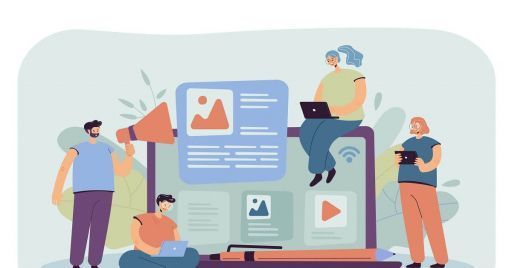
Learning objects: what they are and what they are used for

When we talk about eLearning training we often hear about Learning Objects (LO). But what exactly are they and how do they improve the instructional design of an online course?
One of the main advantages of eLearning training is the possibility of organizing content into modules that meet specific training objectives and can therefore be easily adapted to different courses. With this in mind, Learning Objects (LO) play a crucial role and allow instructional designers to speed up the process of creating online courses.
But what exactly are Learning Objects and how do they work? In this article, we will answer some of the most frequently asked questions:
- What are Learning Objects?
- How is a Learning Object structured?
- What are the advantages of using Learning Objects in eLearning?
Learning Objects: what they are
A Learning Object is an autonomous and reusable digital resource, with a clear educational objective, which allows to organize the contents of a course and/or of an eLearning lesson within an LMS.
To use a metaphor, Learning Objects are like Lego bricks that can be used over and over again to create online courses for different users.
The content of a Learning Object can be of different types: a text, an audio, an image, a video, or any other digital resource. The interface, on the other hand, is the part of the Learning Object that is viewed by the students and is composed of the navigation elements that allow them to enjoy the course.
How a Learning Object is structured
1. Title
The title of the Learning Object must be meaningful and make the user immediately understand the topic of the module. For this reason, it is important that it is concise, clear and direct.
2. Subtitle
Although it is not a mandatory element, the subtitle helps to introduce the topic and provide learners with additional information about the content of the eLearning session they will participate in.
3. Learning Objective
Each Learning Object must focus on a specific learning objective and it is advisable that this objective is shared with the learners at the beginning of the session so that they know in advance what they will get at the end of the session.
4. Table of Contents
The table of contents is intended to provide detailed information about exactly what will be covered within the module, as well as the time required to complete each lesson.
5. Content
This part refers to the actual content that is presented to students to acquire information related to the course topic.
6. Test
In order to verify the correct acquisition of the topics covered, it is important to include a test to verify learning. For each test it will be necessary to define:
- the objectives;
- the type of questions (e.g. multiple choice, true/false, open-ended, etc.);
- the way in which the score will be given.
7. Metadata
A distinctive feature of Learning Objects is the incorporation of metadata within them, i.e. a description that helps designers understand how and where to use the Learning Object.
As an example, metadata includes:
- the objective of the LO, i.e., its purpose and where it can be used;
- the list of prerequisites necessary for the student to use the Learning Object; and
- description of the context in which the object can be used.
- the specification of the technological requirements for its use.
The advantages of using Learning Objects in online courses
The biggest advantage of working with Learning Objects is, without a doubt, their reusability. If well designed, a LO can in fact be used multiple times in different eLearning courses. A Learning Object is of quality if its contents can be used multiple times, always fulfilling its training objective and adapting to a multitude of scenarios and circumstances.
In addition, if they are built according to the SCORM standard - Sharable Content Object Reference Model, Learning Objects are able to function properly across multiple LMSs, i.e. multiple eLearning platforms. This means you can distribute your content more widely and extensively.
Another great advantage of Learning Objects is findability, i.e. the ability to easily locate the space in which the learning object has been stored. In order to do this, it is necessary to define a set of metadata to classify the contents within a repository, i.e. a web archive. Simplifying, metadata is the labels within the Learning Object that identify its content and information such as title, language, author, format, size, and copyright. This improves not only the search for content, but also its management and maintenance.
Because of these features, using Learning Objects in eLearning design significantly speeds up the process of creating and maintaining online courses, as well as increasing the value of the content created. In fact, the value of these resources increases each time the content is reused, saving on the cost and time of producing new materials.
Translated with www.DeepL.com/Translator
Did you like this article? Sign up for the newsletter and receive weekly news!
Subscribe to NewsletterComments:
No comments are in yet. You be the first to comment on this article!